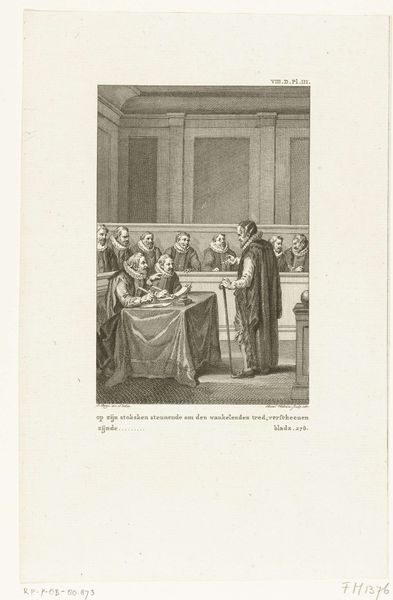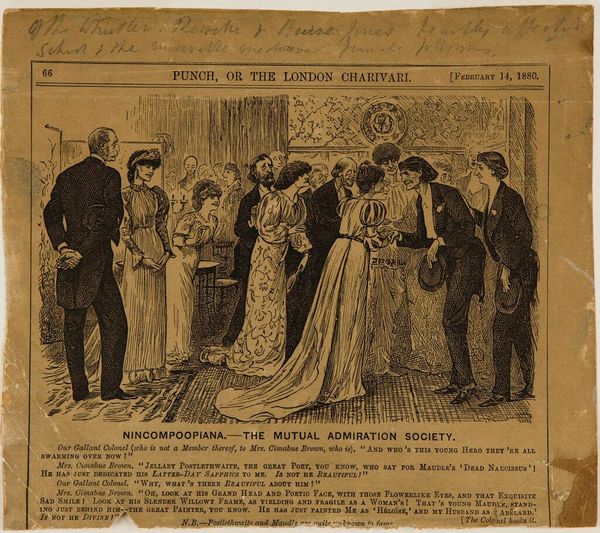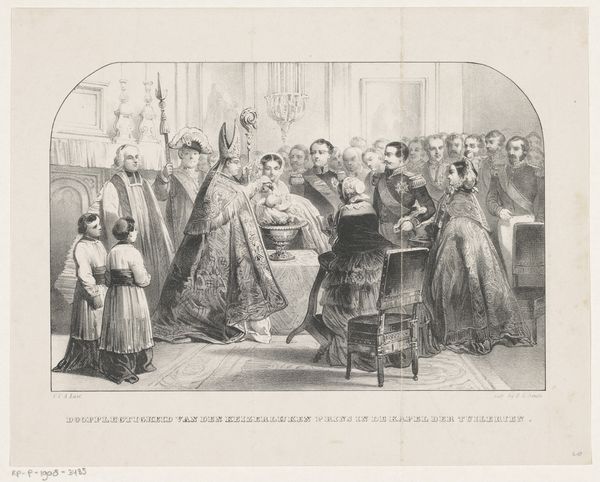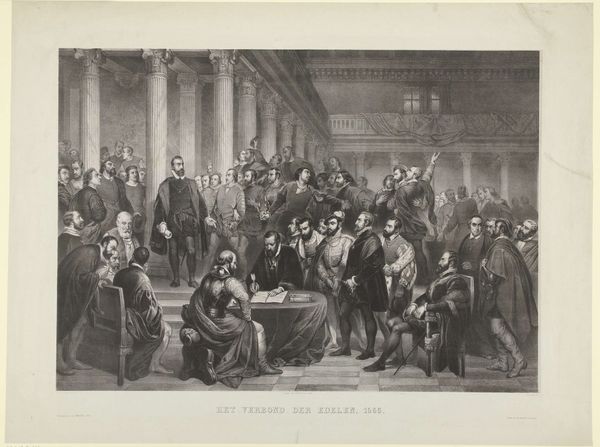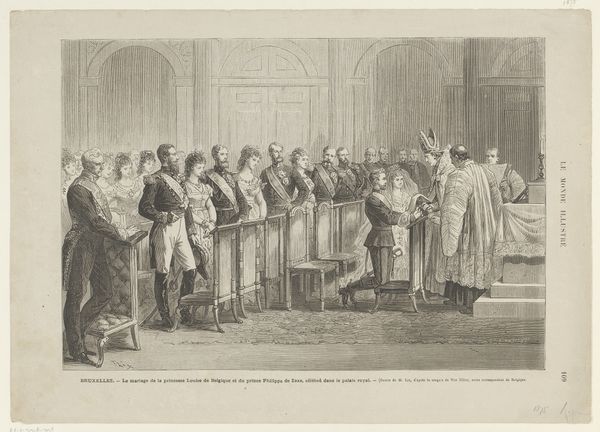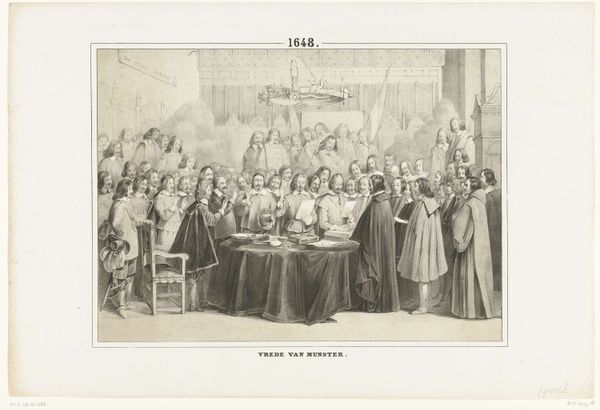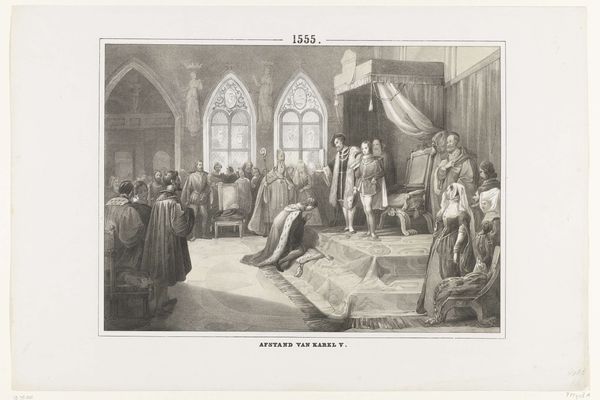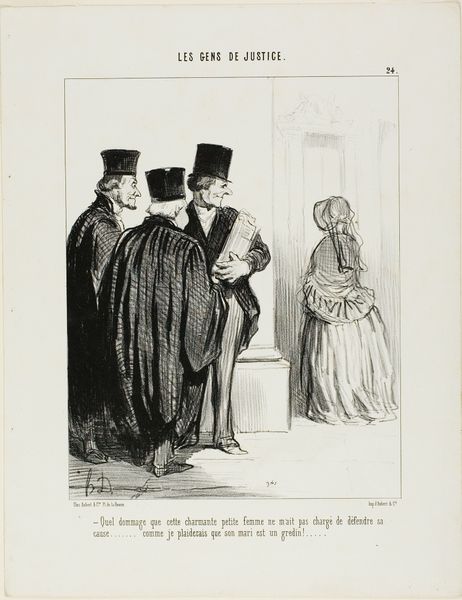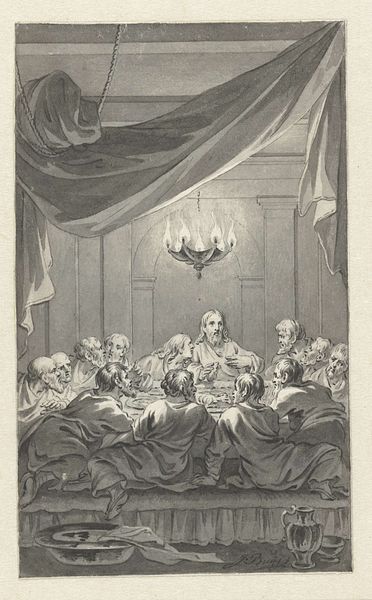
Krant met een artikel over het overlijden en de begrafenis van Willem III, koning der Nederlanden, op 23 november en 4 december 1890 en zijn opvolging door Emma, koningin-regentes der Nederlanden Possibly 1890
0:00
0:00
Dimensions: height 411 mm, width 300 mm
Copyright: Rijks Museum: Open Domain
Curator: This piece, possibly from 1890, is titled "Krant met een artikel over het overlijden en de begrafenis van Willem III, koning der Nederlanden, op 23 november en 4 december 1890 en zijn opvolging door Emma, koningin-regentes der Nederlanden," essentially a newspaper page dedicated to the death of King Willem III and the subsequent regency of Queen Emma. It’s fascinating as a snapshot of a pivotal moment. Editor: My first impression is of profound somberness, a weight of tradition visualized in monochrome. The architectural details and rigid figures amplify the gravity of the event, a royal transition cast in an almost theatrical light. Curator: Absolutely. Consider the visual narrative at play. We see Queen Emma taking her oath. This is not merely about succession; it's a radical shift. As regent, she navigated a male-dominated political landscape. This imagery highlights the power dynamics inherent in such a transition and allows us to question how female leadership was perceived. Editor: The emphasis on symbols is telling. Note the empty throne behind Queen Emma. It's heavy with significance. While she now wields the power, that empty seat persists as a visual reminder of both loss and potential future kingship. It's a charged space within the composition. Even her attire, head-to-toe black, reinforces the symbolism of mourning, authority, and steadfastness in duty. Curator: Furthermore, it serves as a stark example of intersectional politics. Emma's role as queen-regent also speaks to the socio-political context of monarchy intersecting with gender, race, and class. Editor: Exactly! The visual language speaks volumes. Every carefully placed figure, every drape of fabric seems to whisper volumes about duty, legacy, and the uncertain future. What an evocative window into a specific historical moment through iconography. Curator: It's a poignant reminder of how images can both reflect and shape societal perceptions. By analyzing pieces like these, we gain richer insight into complex power dynamics and societal transformation. Editor: Indeed, an intriguing dive into cultural memory and emotional charge carried within visual emblems of state and status.
Comments
No comments
Be the first to comment and join the conversation on the ultimate creative platform.
